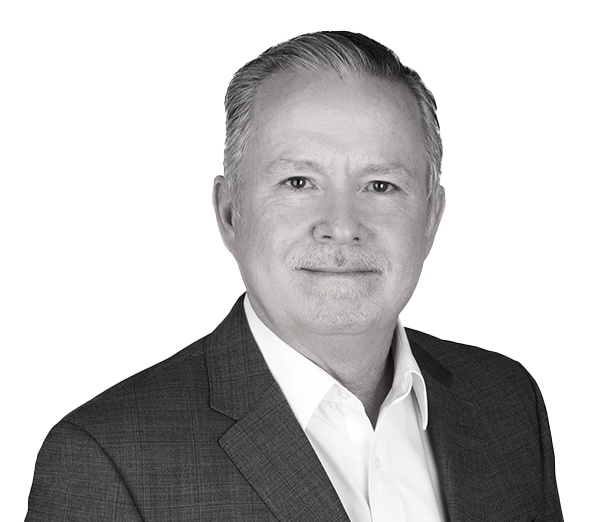 The ongoing migration of enterprise IT to the cloud is driving a great deal of investment these days, and by most measures it’s just getting started. Many types of service providers are looking to ride that wave. One such business is San Diego-based NFINIT, which has been expanding both its range of services and its geographical reach over the last several years. With us today to talk about NFINIT’s approach to the enterprise marketplace is CEO Phil Kenney. Phil just joined NFINIT in January of this year.
The ongoing migration of enterprise IT to the cloud is driving a great deal of investment these days, and by most measures it’s just getting started. Many types of service providers are looking to ride that wave. One such business is San Diego-based NFINIT, which has been expanding both its range of services and its geographical reach over the last several years. With us today to talk about NFINIT’s approach to the enterprise marketplace is CEO Phil Kenney. Phil just joined NFINIT in January of this year.
TR: What was your journey to your current role as CEO at NFINT, and what drew you to the company?
PK: I started out as a programmer, eventually working in various roles in a software company before moving to the consumer side of technology in retail. I was VP of Information Technology first for Hot Topic and then for Wet Seal, and then COO for Jerome’s Furniture. Then I went back to the other side of providing services with ecUtopia, which was later bought by True Commerce, before joining NFINIT. NFINIT is uniquely positioned to supply outstanding IT infrastructure. The pandemic, the movement of real estate, and the movement of legacy systems to the cloud really provide us with a unique opportunity to grow and provide great services to not only our customers, but to new customers as they come along.
TR: What are the origins of NFINIT, and what does the company look like today?
PK: NFINIT has been around since 1989, and it used to be called AIS. AIS was strictly a colocation company, providing power, network connections, and a controlled environment to companies here in San Diego and Southern California. The company started evolving in about 2016, realizing that colocation itself is not going to be enough and that the cloud is really impacting people’s decisions. What we’ve tried to do over the last five years is to change the business model without forgetting our roots. We have moved our business model into three main categories: colocation, which is something we do extremely well; cloud, ranging from just processing and storage up to managed cloud services like backup-as-a-service; and network, providing connectivity for people who need it. SD-WAN solutions are out there for us to be able to do as well. Our mix has gone from 100% colo in 2016 to about 50% colo, 45% cloud, and 5% or so network today.
TR: What physical infrastructure do you use to power those businesses?
PK: We own two facilities here in San Diego, and we also have two additional spaces that we rent. Then we have an agreement with Zadara under which we can stand up cloud service solutions anywhere in the world. In fact, we’ve set up one in Germany just recently. For network, we work with partners and can offer connectivity via nine different network providers.
TR: What verticals and types of companies are you focusing on?
PK: We are really not a vertically restricted company. Our solutions are such that we can provide them to many verticals. But we do have a strong focus in several key verticals such as retail, health care administration, and financial services. We also provide solutions for other managed service providers. Then we serve a wide swath of technology companies, whether they be software providers running SaaS solutions or providers of highly-intense storage for health care companies for things like X rays and MRIs. The mix has shifted steadily towards the solution providers and to the technology companies, and we are seeing more movement in recent months in financial services and health care administration as those industries are moving a lot of storage to the cloud.
TR: What do those customers say is driving their decisions in today’s marketplace?
PK: What we’re hearing most from customers is that they can’t physically expand their facilities enough, and that it’s much more efficient to utilize cloud solutions that they can stand up quickly. Number two is that storage needs are just ever-growing. We often hear comments like needing to be able to add a terabyte every month. The fact that we can do that in minutes and we can do it with a personal touch differentiates us in the market.
TR: Do you find those customers coming in with experience in the cloud already, or are they new to all of this still?
PK: A mixture of both. Some have had cloud experiences before that they just wanted to shift or to expand in a different direction. About 60-65% are coming brand new to the cloud, moving away from a previous on-premises or controlled environment.
TR: So into what projects are you putting your resources today? What are you looking to expand?
PK: We are putting more and more in our cloud and managed services portfolio and into the infrastructure that goes along with that. What is driving that is phone calls from people who need storage, and especially backup-as-a-service and disaster recovery. Ransomware is ever present right now, and we see it affecting decisions about storage and security offerings. Customers are looking for redundancy and recoverability. Also, many people out there just don’t have a secure building housing their IT infrastructure, and they want to move it in order to protect themselves.
We are both adding new services and expanding the existing services that we do have. Geography is very important for storage. For example, our expansion to Germany meant making sure we had the right relationships to be able to offer those services. And finally, we’re investing significant dollars in upgrading our infrastructure and our use of technology across the board. Our most recent investments surround security and evolving our safe place for data and processing.
TR: What new technologies and capabilities are enterprises demanding for the near future?
PK: For the next generation what we’re seeing a lot of is immutable storage. If storage is not immutable and you get ransomed, you have to go back and find your safe backup and then work from there. On the technology side, most companies’ security implementation and processes have a long way to go to keep up with the sophistication of threats. We’re making more and better use of security endpoints, firewalls, and micro segmentation within the network. Most companies don’t have one system; they will have 8, 10 or 12 systems running an enterprise.
TR: How do smaller providers like NFINIT differentiate themselves from national and international service providers and technology giants to businesses and enterprises?
PK: NFINIT’s approach is different because we’re trusted advisors who take ownership of IT and business outcomes for our clients. We’re not just selling infrastructure and services; instead, we’re offering a broader, consultative view of best-fit IT roadmaps, taking responsibility for everything from procurement and configuration to ongoing management and financial considerations. In short, we’re making the service work, end to end, in a way that’s relentlessly reliable and customized to the client’s needs. With NFINIT, you can grow your business, and as you grow, you get to pay for the technology pieces in an appropriate, rationed manner. We often say, our #1 differentiator is payroll – meaning, we retain much more expertise and talent compared with other providers. In addition, we really focus on our partner network. In fact, just this summer, we were named 27th top managed service provider in the world in the latest Channel Futures MSP 501 list.
TR: How has the pandemic of the last year and a half affected your operations and business?
PK: We were lucky, knock on wood, that it didn’t affect our relationships much because so many companies and businesses pivoted very quickly. Where we did see effects is that because people no longer went into an office and adjusted their on-premises systems, we saw a shift toward closing down real estate that’s driving technology back into bigger facilities. What they saw was after all their people left their buildings, they were still burning a lot of power just to keep that technology running and that was burning a lot of costs. So they are upgrading legacy-type systems with big iron and shifting that data and some of those applications to the cloud. We’re also seeing movement into the cloud to make it easier to manage systems remotely.
TR: How much of these shifts do you think is permanent, and what might revert back after the pandemic subsides?
PK: At least from the technology standpoint, I think the shift that we’re seeing is becoming more and more permanent. Finding people who are qualified to manage, upgrade, and maintain such systems is getting harder and harder, and the cost of those people even at junior level is going higher and higher. The second shift we see as being a little bit more permanent is in real estate. If people aren’t coming to the office, why not shrink or downsize that building not just in terms of people but also the areas that are related to technology and technology infrastructure that those people are now remotely accessing anyway. A third shift that won’t be reversed is the evolution of legacy systems into cloud systems, although that didn’t itself derive directly from the pandemic.
TR: How do you view M&A as a path to growth? Are there inorganic opportunities NFINIT might look at, or do you view your path forward as more organic?
PK: Both. We do have our own organic plans, but there are inorganic opportunities that are out there. First, I probably get a call a week on a data center that might be available in a certain region. Most people would say that such real estate is always a good investment, so there may be real estate that makes sense for NFINIT to look at. The second thing that we see quite a bit of is managed service providers out there that have a great solution but they can’t scale their business. Some of those guys out there might make a lot of sense for us as a company to maybe pull in. So it is something we’re in constant evaluation of, although we haven’t pulled the trigger on anything at this point. If the right opportunity comes along, we would. But it’s a seller’s market. There are a lot of large private equity and venture capital firms sitting there with a lot of cash. Yet as we have seen, opportunities arise in different places at different times.
TR: Thank you for talking with Telecom Ramblings!
If you haven't already, please take our Reader Survey! Just 3 questions to help us better understand who is reading Telecom Ramblings so we can serve you better!
Categories: Cloud Computing · Datacenter · Industry Spotlight · Managed Services






Discuss this Post